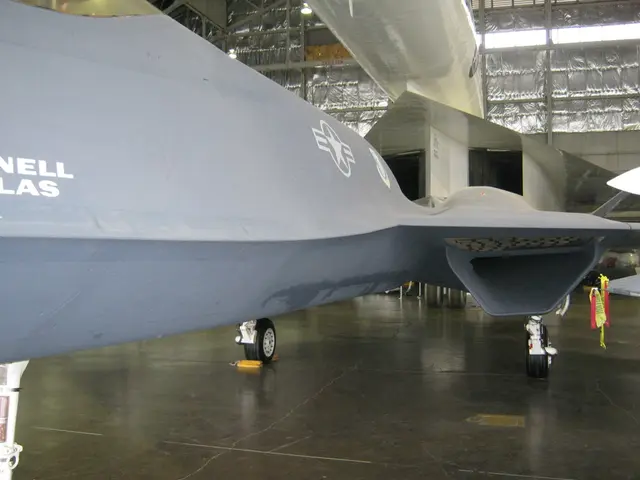"Urals airlines." Establishing an aviation empire in Yekaterinburg.
Listen to this episode on any convenient platform:
Listen to URAL AIRLINES. From the first airports to landings in fields on YouTube
- Telegram
- "VKontakte"
- Apple Podcasts
- YouTube
- Castbox
- Podcastaddict
- PocketCasts
- Overcast
- SoundStream
- Spotify
- Dezeer
If you missed the extensive work of journalist Alexandra Morozova, you can read it here.
### History Spanning 30 Years. How Sergei Skuratov Built the Urals Aviation Empire
Now, if you're not in the mood to listen to a podcast right now, you can read the written version of this episode below. Here you will find more than just about Skuratov and "Ural Airlines", but also the history of Russian and Sverdlovsk aviation.
- Soon it will be vacation season. And I'm sure many of you will end up in the most coveted place for anyone over 20 - at an airport. Ohh, this feeling, when you enter the huge, glass building filled with queues, endless crowds of people, and airport chaos. In any other situation, such an environment would certainly provoke at least some irritation and a strong desire to leave as quickly as possible. But the airport-airliner magic - in other words, the magic of the upcoming journey - works in a completely different way...*
Hello! This is the podcast "Dim, What's Happening?", where I, your host Dima Shlykov, tell stories about Ural business that has gone through difficult times and survived. In the previous episode, we talked about motorcycles that have been produced in Irbit for over 80 years. Today, we'll take to the skies.
There's not much suspense here. Today I'll tell you the story of an aviation company from the Urals. You already know, right? Let's sing - 3, 2, 1 - "Ural Airlines". Thanks to everyone, I hope the people around you are now looking at you strangely.
But let's move on to business.
### Historical Overview
I won't bore you with the detailed history of worldwide aviation - that's an entire podcast in itself. What's important is that man has been drawn to the sky for centuries.
For example, in Russian history, the first successful attempts at aircraft design were made by Lomonosov 270 years ago. At a meeting of the Imperial Academy of Sciences, he presented a box-shaped winged device, which was the first model of a helicopter in history. Unfortunately, this contraption could only be lifted by a small child.
Things picked up in the 19th century, the era of technological revolution, everything. For example, in the early part of the century, Alexander Mozhaiskiy created a model of an aircraft. It took off on wheels, detached from the ground, and climbed into the air. By the end of the century, Mozhaiskiy managed to build a full-size aircraft based on the model. The aircraft briefly took off from the ground, but suffered an accident during takeoff.
In the 20th century, aviation became an indispensable part of any nation, mainly for military reasons. In imperial Russia, the first full-fledged aviation factories began to open in Moscow, Kazan, Samara, and Ulyanovsk, among others. Sverdlovsk, where we are going, was not included in this list. However, the first flight in Yekaterinburg - and we're talking about pre-Soviet Yekaterinburg here - took place in 1911 at an hippodrome.
In six years, the city had an official flying club. Its goal was to conduct flights and even find a suitable location for an airfield - that is, outside the city at the time. However, the Revolution and the ensuing Civil War delayed these plans.
Nevertheless, by 1924, the airfield construction process had begun at a site near the village of Uktus. This airfield became the main one in the city and served local air routes.
However, by the following decade, a new solution was needed. The reason was that, according to aviation rules, airports should not be located in city centers. On the one hand, it is dangerous to constantly take off and land planes near residential areas. On the other hand, residential areas limit the potential for airport expansion and development.
Therefore, even though the Uktus airfield was developed into a full-fledged passenger airport with an airport terminal, construction of a new airport began in Koltsovo in 1928.
Initially, Koltsovo was built as a military airfield. It remained as such until 1943. Pilot training and aircraft testing took place here. During the Great Patriotic War, units of the air force, including a fighter division protecting Sverdlovsk, were based here.
However, there was a pressing need for a civilian airport. Koltsovo, which was deserted by the military at the time, was handed over to civilian aviation. It's worth noting that the Uktus airfield continued to function - all the way until 2012. And it was demolished in 2021.
Koltsovo grew and developed. Almost immediately after the war, planes began to fly to various cities. A hangar for technical aircraft maintenance was built, as well as a concrete runway and a standard airport terminal.
In the 1960s, Sverdlovsk became an important transportation and industrial hub of the Soviet Union. Therefore, a powerful aviation infrastructure was needed to provide
- regular passenger flights,
- rescue missions,
- cargo deliveries to Siberia and the north.
Thus, in 1963, on the basis of various scattered aviation structures in Koltsovo, a single aircraft enterprise - the Sverdlovsk United Aerodrome Unit of the Ural Civil Aviation Administration - was created. This allowed for the centralization of airline operations, simplifying logistics, more efficient use of aircraft, crews, and ground infrastructure. In other words, a clear system was established.
From 1965, this unit was the best in the structure of Aeroflot until the dissolution of the Soviet Union.
### After the dissolution of the USSR
The dissolution of the Soviet Union disrupted the established system of aircraft operations. Demand for passenger travel fell, and most civilian airlines stopped buying new aircraft. Budgetary funding for the industry also declined significantly. During this period, instead of a centrally managed state-owned airline, independent companies began to emerge, some of which were spun off from state ownership.
In 1991, the Sverdlovsk United Aerodrome Unit transformed into the First Sverdlovsk State Aviation Enterprise. And two years later, it was divided into Koltsovo Airport and "Ural Airlines". Sergei Skuratov headed "Ural Airlines" for 31 years.
### Who is Sergei Skuratov?
Sergei Skuratov was predestined to be involved in aviation from birth. Although, to be honest, life in Koltsovo, where the Skuratov family lived, had aviation connections. His father worked for the aviation enterprise as an aircraft mechanic and his mother was the shift supervisor for the Koltsovo airport.
Despite this, little Seryozha Skuratov dreamed of becoming a doctor. However, aviation continued to permeate every aspect of his life.
He studied at a school that, during Soviet times, was considered almost "the aviation school" in the city. And it's no exaggeration to say that sons like Seryozha Skuratov, who were inspired by their parents' examples and underwent this training, often also chose aviation.
After school, Sergei Skuratov entered Buguruslan Aviation School. He studied well, was a member of the student council, and served as the secretary of the aviation student union. In short, he was an outstanding student, by the standards of Soviet times, a Millionaire, a Playboy, a Philanthropist.
After completing the school, 20-year-old Sergei Skuratov came to Uktus Airport. Two years later, he was awarded a pilot's license of the third class for civil aviation - the initial level. This allowed Skuratov to become the commander of a light biplane AN-2.
In March 1973, Skuratov completed his first independent flight to Irbit. As with his first solo flight in school, he didn't really remember this flight - there was nothing particularly remarkable about it for him.
Over time, he began to fly to other cities in the Urals. At first, he transported cargo, later passengers. During the same period, he continued to improve in his profession: he graduated from the Civil Aviation Academy in Leningrad as an engineer-pilot, and later received a qualification as a commanding aviation specialist.
All this, of course, was not for personal interest, but to advance faster in his career. Education provided Skuratov with the opportunity to
- become the head of the safety inspection unit for civil aviation in the Urals,
- take command of the Sverdlovsk United Aerodrome Unit,
- and eventually head "Ural Airlines" in 1993.
### The 1990s
"Ural Airlines" inherited
- fleet,
- technical services,
- best personnel
- and decades of experience from the Sverdlovsk Aerodrome Unit.
However, this did not protect the company from financial difficulties. By the end of 1994, demand for passenger transportation in the country was falling, and the management of the airline was forced to lay off 150 employees.
Another problem of those times was the non-payment of money by countries such as Uzbekistan and Azerbaijan for flights. The debt was about 3 million rubles. However, "Ural Airlines" continued to operate unprofitable flights for the sake of maintaining the market share and avoiding the loss of their customer base. This allowed the company to maintain its market position and, in general, survive. For example, other companies in Perm, Chelyabinsk, Kirov, Tomsk, Vladivostok, and other cities simply disappeared during the 1990s.
By the end of the turbulent decade, there was a new threat. The management of "Aeroflot" at a meeting with the governor of Sverdlovsk, Eduard Rossel, announced plans to actively cooperate with the region. Koltsovo was being considered as a possible base for the main Russian airline.
The airport director found this prospect appealing, while Skuratov was not optimistic. After all, such a move would mean a significant loss of passengers for "Ural Airlines", which would lead to a loss of profit. Skuratov argued that "Aeroflot" would be better off opening new routes to places where the "Uralites" did not fly. Despite their somewhat strained relations, the companies eventually signed a strategic cooperation agreement. It was best for both sides not to cause unnecessary problems.
At the beginning of the '00s, "Ural Airlines" were buzzing. The company was transporting passengers around Russia and all over the world, training pilots of the highest category, and had a fleet of 20 aircraft. This was all great. If not for one peculiarity of the period: whenever a successful business was seen, it was quickly targeted by those who wanted to seize it by any means.
Skuratov had to protect "Ural Airlines" from hostile takeovers. At first, he owned less than 1% of the company's shares. 51% of the company belonged to the state, and the rest belonged to the employees of the airline. Such a structure posed a risk.
In order to protect the company from raiders, "Krylya Urals" - a subsidiary of "Ural Airlines", which Skuratov headed - began to buy up shares of "Ural Airlines". As early as the beginning of the 21st century, "Krylya Urals" owned almost 75% of the shares. Already, it could be said that "Ural Airlines" was owned by Sergei Skuratov, although the official transfer of him took place only in 2012. "Krylya Urals" sold its 2/3 of the shares of the mother company for only 60 million rubles. At that time, the same amount could buy a four-bedroom apartment in Moscow. Experts, of course, tried to draw attention to the cheap sale of the company, considering it undervalued. However, the antimonopoly service approved the deal.
### Flight Delays
Although "Ural Airlines" was one of the best in Russia, it became famous not for innovation, but for constant delays of flights. Even Sergei Skuratov himself almost missed a meeting with the Minister of Transport of Russia due to a delay in a flight of his own airline. In our Telegram channel, you can write about any similar experiences you have had.
The situation came to a head in 2021 when "Ural Airlines" appeared in an anti-ranking - from among 150 large airlines in the world, it had the worst punctuality rate. Only one out of every three flights arrived on time. Over three months, they delayed more than 15,000 flights - not just for a few minutes, but more than an hour!
Skuratov placed the blame for delays on external circumstances. In particular, he mentioned the pandemic. At that time, the airports reduced personnel responsible for cleaning and loading aircraft significantly, which caused delays during peak travel periods. However, it is worth noting that other airlines were able to maintain punctuality under the same conditions. But this point is rhetorical, of course.
### Field Landings
However, delays were not the most dangerous problem for "Ural Airlines". A more serious concern was the two emergency landings in fields.
The first incident occurred in August 2019 when pilot Damir Yusupov landed a plane carrying 233 passengers in a cornfield in the Moscow region. Everyone survived, even though 76 passengers suffered injuries. In November, President Vladimir Putin awarded Yusupov and his co-pilot the Star of the Hero of the Russian Federation. The event was named "The Miracle in the Cornfield", after a similar event on the Hudson River in the United States.
However, experts were not as optimistic about the incident. Some even suggested that Yusupov "not saved, but almost killed people". In the Russian Interstate Aviation Committee, which conducted the investigation into the incident, it was found that the pilots acted chaotically and made numerous mistakes. However, Yusupov and his crew were still hailed as heroes.
The fate of the crew of an aircraft that made an emergency landing in a field of wheat near Novosibirsk in 2023 was much worse. There, they were accused of poor training and reckless behavior. In the Russian Aviation Authority, they stated that the pilots had an inadequate level of training and behaved recklessly during the emergency landing.
These incidents were the subject of nationwide discussion in Russia. Despite all this, Sergei Skuratov continues to call "Ural Airlines" a leader in safety. After all, over 30 years, the company has never had an aircraft accident with fatalities.
"We have not brought any inconvenience to any passenger in any of these incidents, and in general we fly safely since 1967. We are leaders in air safety. Emergency landings outside airport runways are rare and often result in casualties. This is the most important thing, and everything else is secondary", Skuratov told Kommersant-Ural.
### Changes After 2022
"Ural Airlines" faced new challenges in 2022. The reason was the war in Ukraine, which had a significant impact on the airline industry.
The problem was that in 2000s, the airline turned its back on Russian aircraft in favor of Airbus planes, which were technologically superior to their Russian counterparts but cost the same. This move allowed the company to enter the Western aviation community.
However, after February 24, 2022, Eurozone airspace was closed to Russian aircraft, and leasing companies began to detain planes from Russian airlines in foreign airports. Almost all major Russian airlines were forced to suspend international flights.
In March, the authorities of the Bermuda Islands, which registered many Russian aircraft, temporarily suspended the aircraft's airworthiness certificates for Russian airlines. They explained that they could no longer control the technical condition of the aircraft. With "Ural Airlines", all 52 of their aircraft were registered on the Bermuda Islands.
The situation forced "Ural Airlines" to ground part of the pilots and flight attendants.
However, only in December 2023 did "Ural Airlines" manage to buy 19 Airbus aircraft from a large leasing company, which allowed the company to resume international flights.
### "Ural Airlines" Without Sergei Skuratov
The era of Sergei Skuratov in "Ural Airlines" came to an end in August 2024 when he turned 70 and retired. He passed control of the company to his son Kirill Skuratov.
In contrast to his father, Kirill Skuratov focused more on economics in his education. However, he also studied at the Urals Civil Aviation Academy.
He joined the airline in 1996 and held a variety of management positions before becoming first deputy general director (AKA his father's second-in-command).
In general, there is little information about Kirill Skuratov outside of official registrations. He did not give interviews, nor did he disclose the direction in which he intends to lead the company. However, it can be assumed that the company faces challenges.
In March, Kirill Skuratov announced that the planes of "Ural Airlines" were being operated at the limit of their potential capacity. For 2024, the airline plans to maintain the same volume of passenger traffic as in the previous year.
"Growth is not being considered: our entire fleet is operating at its maximum potential. As long as we don't have another fleet, we won't be able to increase passenger traffic physically", Kirill Skuratov said.
The purchase of new aircraft is not being planned, and renting aircraft from other airlines on a "wet lease" basis - that is, including crews - is interesting to "Ural Airlines", but there are no such offers. However, without new aircraft, it is not possible to increase the passenger flow.
However, on the other hand, all is not so bad. In 2024, "Ural Airlines" expanded its route network and opened several new routes both domestically and abroad...
Planes fly, no matter what. And I, no matter what, will continue to tell you stories about the powerful Ural business. Next week, we'll meet again in your headphones and continue our conversation about aviation, but from a different angle. Until then, subscribe to the podcast to make sure you don't miss new episodes. Goodbye!
- The podcast "Dim, What's Happening?" delves into the history of Russian aviation, focusing on the story of Ural Airlines, a company that has roots in the 1920s and spans over 30 years.
- In the world of finance, Ural Airlines, a vital player in the transportation industry, initially faced financial difficulties in the 1990s but managed to survive and thrive, despite being threatened by hostile takeovers.
- The aviation sector, including Ural Airlines, has been significantly impacted by recent events in the news, such as field landings and the closure of airspace in the Eurozone following the war in Ukraine.







